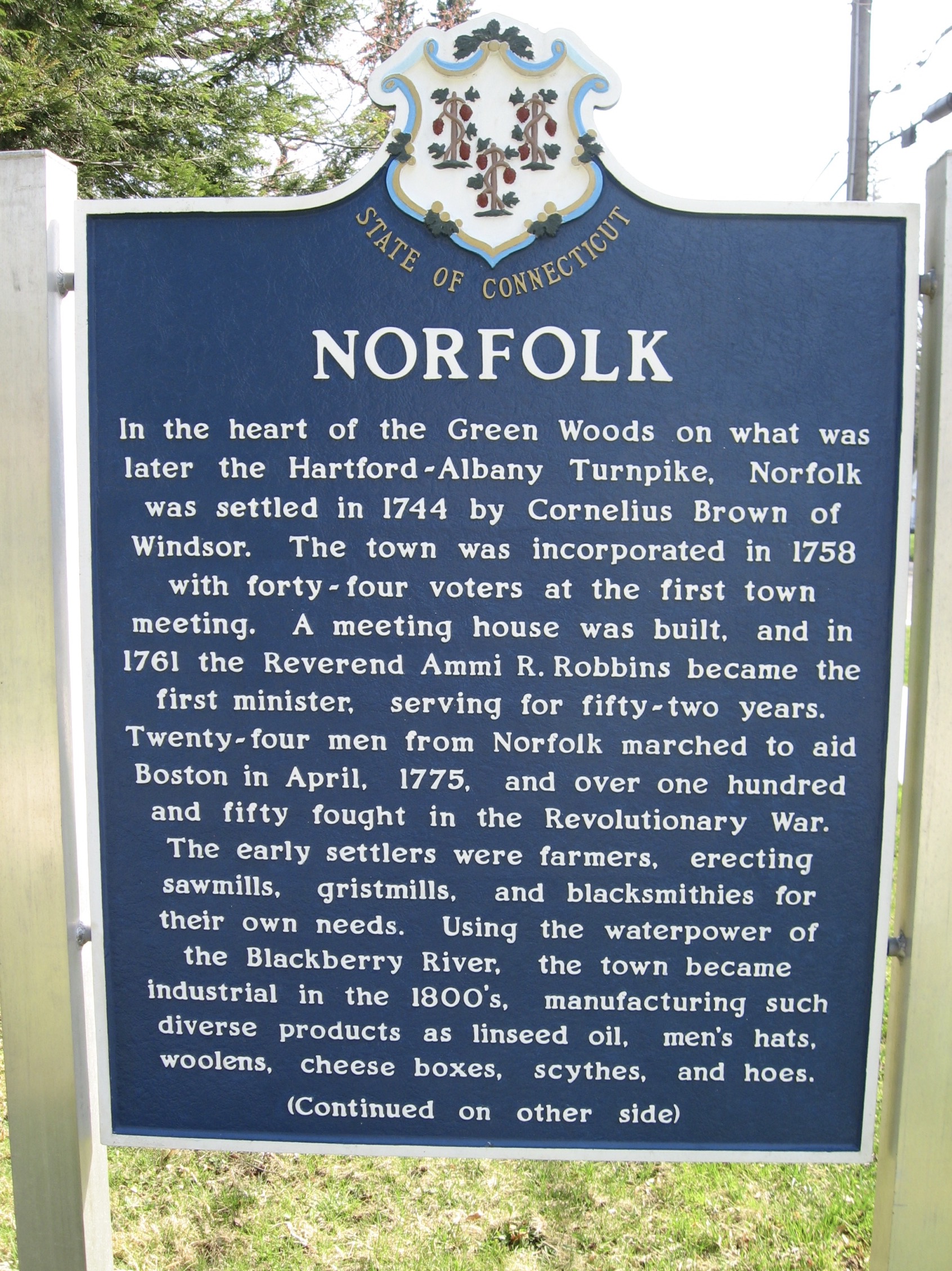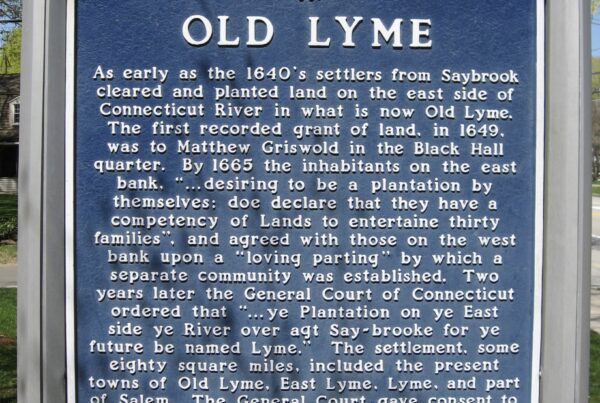
Norfolk, Connecticut:
“In the heart of the Green Woods on what was later the Hartford-Albany Turnpike, Norfolk was settled in 1744 by Cornelius Brown of Windsor. The town was incorporated in 1758 with forty-four voters at the first town meeting. A meeting house was built, and in 1761 the Reverend Ammi R. Robbins became the first minister, serving for fifty-two years. Twenty-four men from Norfolk marched to aid Boston in April, 1775, and over one hundred and fifty fought in the Revolutionary War. The early settlers were farmers, erecting sawmills, gristmills, and blacksmithies for their own needs. Using the waterpower of the Blackberry River, the town became industrial in the 1800’s, manufacturing such diverse products as linseed oil, men’s hats, woolens, cheese boxes, scythes, and hoes.
In the later 19th century industry declined, but the coming of the Connecticut Western Railroad in 1871, together with Norfolk’s natural beauty, contributed to the growth of a thriving summer colony. Largely through the efforts of the Battell and Eldridge families, Norfolk has been a center of culture since the establishment of the Norfolk Library in 1888 and the Litchfield County Choral Union in 1899. The Stoeckel Estate and its famous Music Shed, often visited by many of the world’s greatest musical artists, is now the home of the Yale Summer School of Music and Art.
Erected by the Town of Norfolk
the Norfolk Historic District Commission
and the Connecticut Historical Commission
1975″

CT Blue Town Sign 9 of 169.
View on Instagram: https://www.instagram.com/p/CPQna0HndLC/
View location on Google Maps: https://maps.app.goo.gl/gkqHZMjQnBqUehUt5




